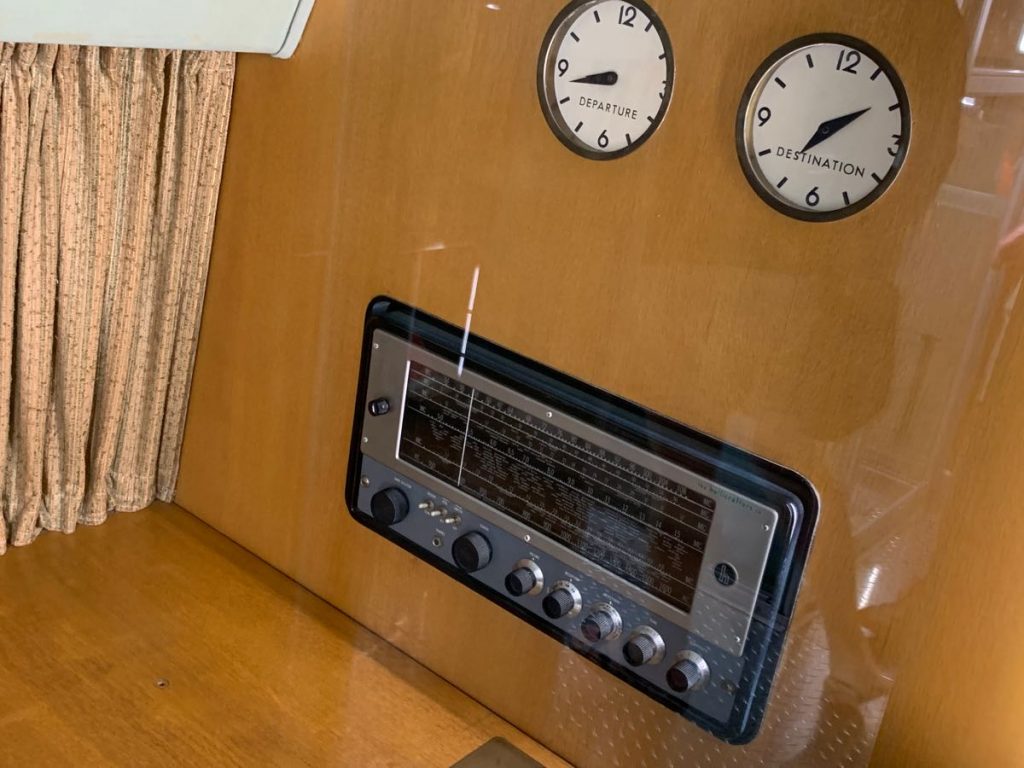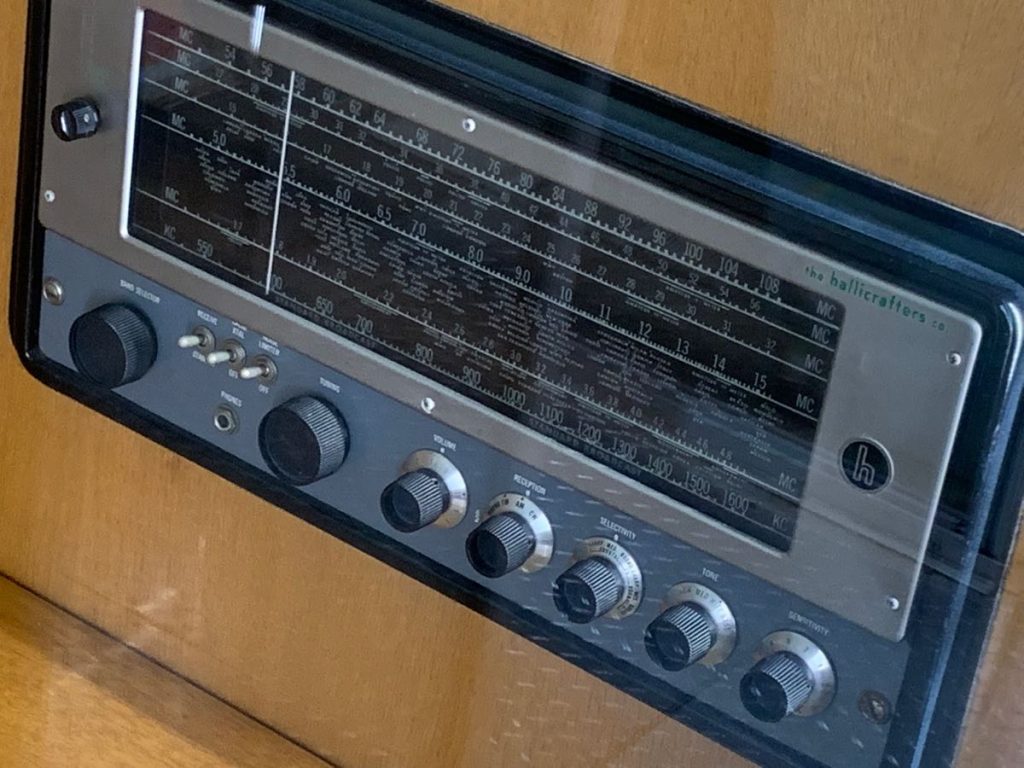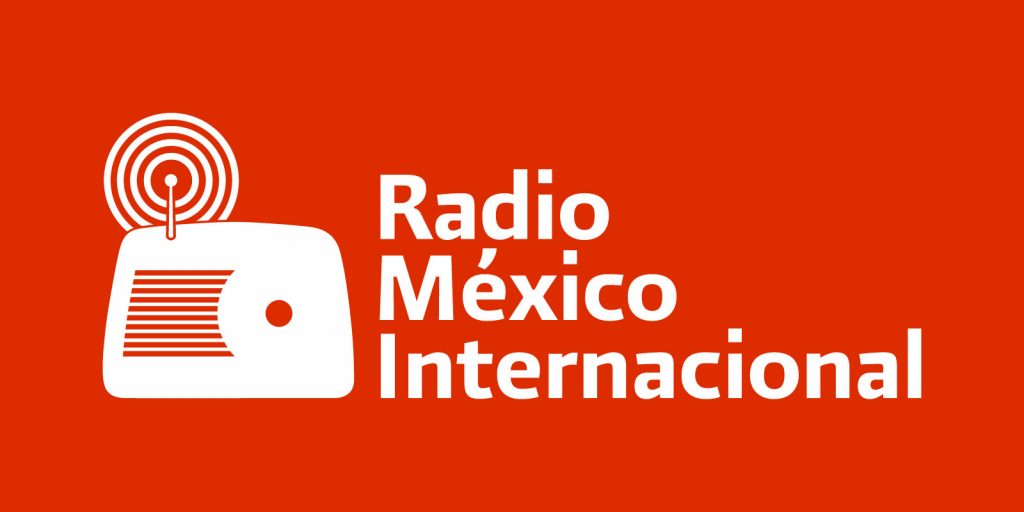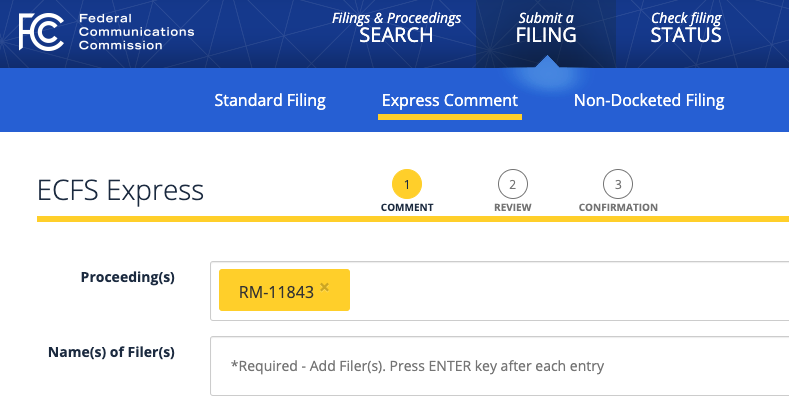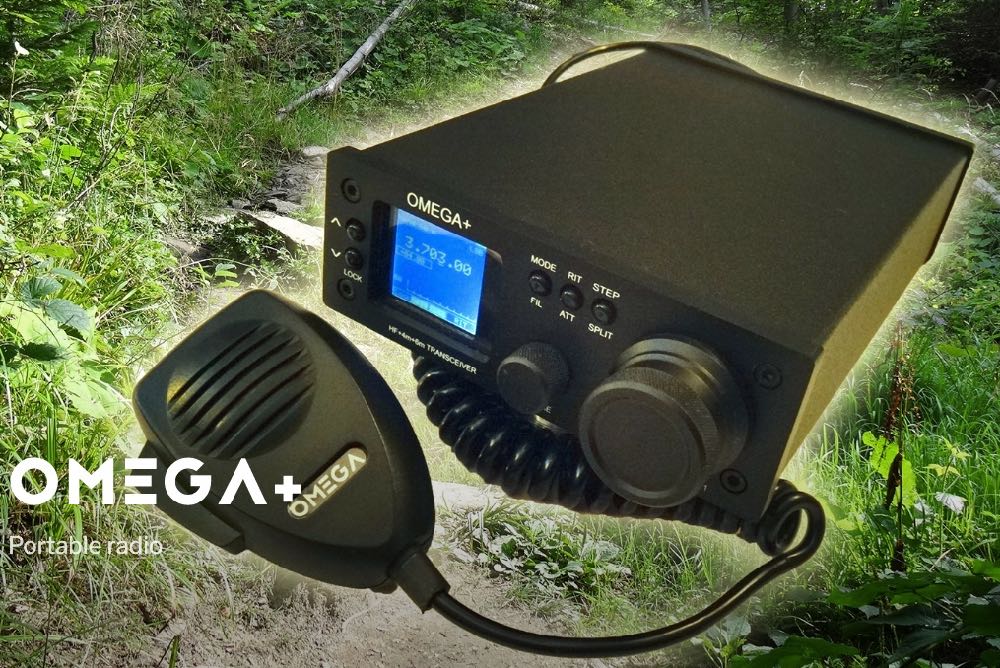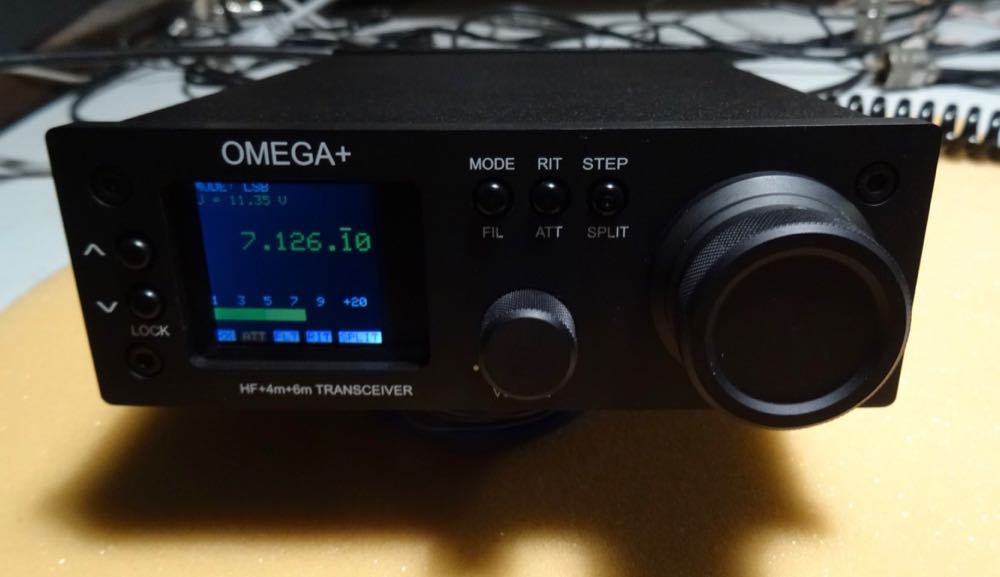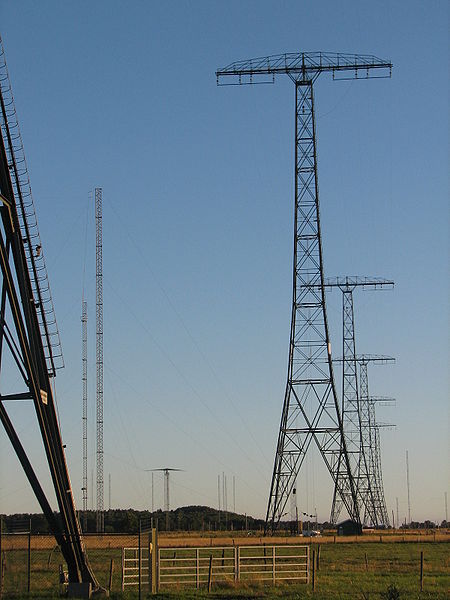Monthly Archives: June 2019
Can you identify this Hallicrafters model onboard the Columbine III?
Many thanks to SWLing Post contributor, Robert Yowell, who writes:
I was visiting the US Air Force Museum [Friday] and walked through “Columbine III” which was the Lockheed Constellation used as Air Force One by President Eisenhower from 1954 until he left office. In the back of the cabin was a nice cozy area where this Hallicrafters receiver was installed – ostensibly for the passengers to listen to news or other events while in flight.
I am sure one of your readers will be able to identify which model it is.
Can you imagine flying in this gorgeous Lockheed VC-121E four prop aircraft and listening to HF radio from a built-in Hallicrafters set? Wow…
Thank you, Robert, for sharing these photos. The National Museum of the US Air Force is one of my favorite museums in the world. I bet I’ve visited it more than a dozen times over the past decade–always a treat and always something new to discover!
Post readers: Can you identify this Hallicrafters model? Please comment!
Russia to test DRM over FM
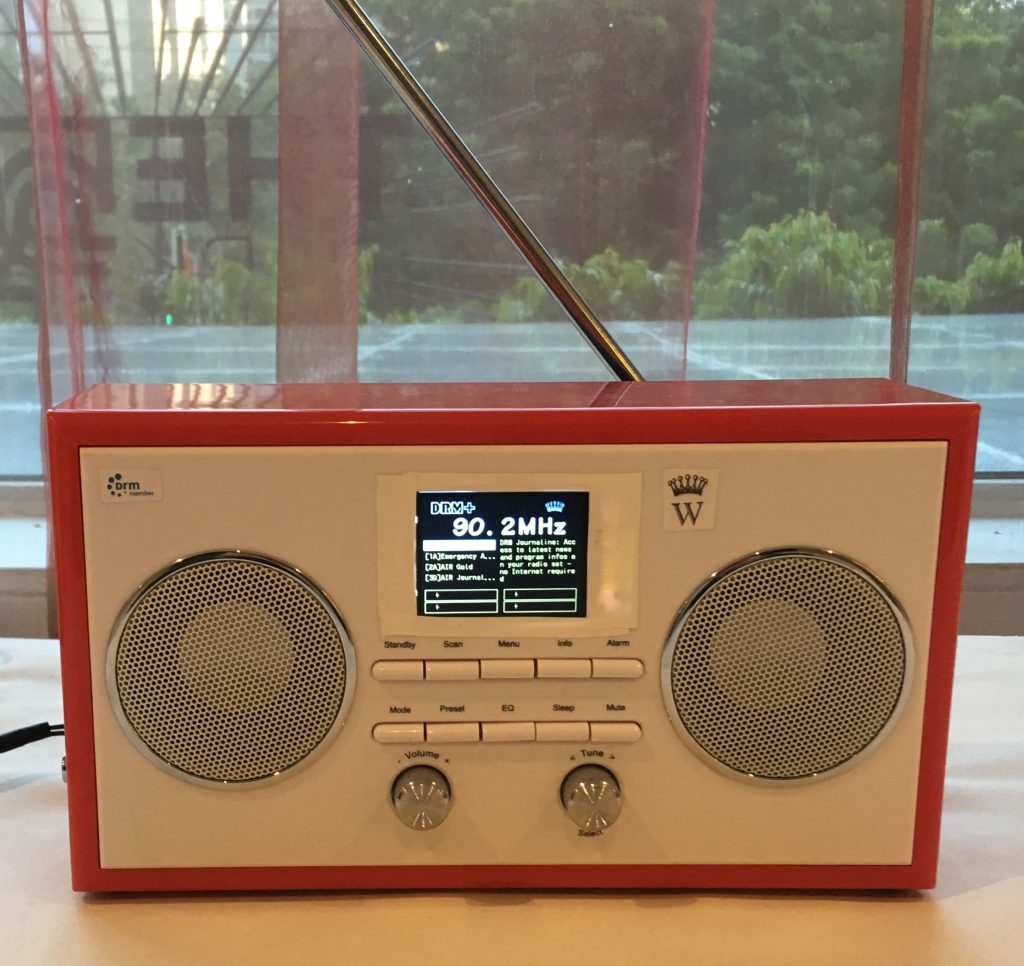 (Source: Radio World via Michael Bird)
(Source: Radio World via Michael Bird)
Russia will begin testing the Digital Radio Mondiale digital radio standard in the FM Band in July in St. Petersburg.
Russian firms Digiton and Triada TV are working with Fraunhofer IIS, RFmondial, chipmaker NXP and others to carry out the pilot.
The organizers will install a DRM-capable transmitter mid-July and begin regular simulcast broadcasts (DRM for FM) immediately after site acceptance checks are complete. The transmitter will reportedly be on air for six months and have an analog transmitting power of 5 kW and a digital output power of 800 W.[…]
Radio México Internacional to disappear
Many thanks to SWLing Post contributor, Tracy Wood, who writes:
Radio México Internacional will disappear (again)…web stream to sadly go away.
Tracy referenced this article (in Spanish) from El Sol de México. The following excerpt was translated to English via Google Translate:
A grim picture was presented to employees and workers of the Mexican Institute of Radio (IMER), since the budget cut would technically lead to “paralysis” and a labor liability of seven million pesos before the dismissals.
In an audio, which was obtained by El Sol de México, the workers and collaborators were explained that “the IMER does not have the capacity to hire anyone. Neither in fees nor as a freelance, ” he says.
[…]But the recount of the damages that the IMER will have for the lack of resources is that “four stations will disappear in their entirety: Radio Mexico International, World Music, HD Interference and Digital Jazz. There will be no hearing advocate, which is why article 259 of the Federal Telecommunications and Broadcasting Law is not followed. “
Very sad news. While RMI hasn’t been on the shortwaves since 2004, they have maintained a web presence.
Thank you for sharing, Tracy.
FCC: RM-11843 seeks creation of a new 8-meter Amateur Radio allocation
Many thanks to a number of SWLing Post readers who have shared links to this petition for rulemaking–created by Michelle KU3N–to create a new 8-meter Amateur Radio allocation.
I’ve included the author’s notice about this proposal and also a news item from the ARRL below. First, however, just a quick tip on filing comments via the FCC system:
Making a comment
If you’re interested in commenting on this petition, you can do so via the FCC Electronic Comment Filing System until July 26, 2019.
Using the system the first time is a little confusing–here’s a tip:
Open the comment form on the FCC Express Filing site.
Next, type in the filing number in the first field:
The filing number should auto-complete as you type. Once it has been selected (as in the screenshot above) continue filling out the rest of the form with comments and then submitting it. It’s pretty simple, but if you’re not used to the comment system, selecting the proper petition can be a little confusing.
Of course, the FCC also has the following help page: “How to Comment on FCC Proceedings”
For more information about this proposal check out the articles below from the petition author at REC Networks and also a notice from the ARRL:
(Source: REC Networks)
Today, the FCC has assigned a rulemaking (RM) number to a Petition for Rulemaking filed by REC Networks, through its founder, Michelle Bradley, KU3N as RM-11843.
This petition calls on the Commission to work with the National Telecommunications and Information Aministration (NTIA) to allow for amateur radio operations in the 8-meter band. This petition was in response to activities taking place in ITU Region 1 where more administrations are starting to authorize very limited operation on 8 meters. Ireland, Slovenia and South Africa have already granted amateurs regular access to all or portions of the band being asked for in the petition. In fact, ComReg, the Irish regulator has even gone far enough to allocate virtually the entire VHF low band (30~49 MHz) for amateur radio use.
In the petition, REC/KU3N notes that this spectrum could be used for weak signal experimentation and general amateur use primarily along transatlantic paths using CW, SSB and digital modes such as FT8 and digital voice. As no radios are currently manufactured for this band, it could encourage “makers” to design new equipment and antenna design. REC/KU3N predicts low usage of this band except during scheduled activities such as Field Day and contests as well as periods of sporadic-E, high sunspot numbers and other periods with a higher maximum usable frequency.
In the petition, REC/KU3N is asking to use 40.51 to 40.70 MHz, allowing beacons, prohibiting repeaters and discouraging FM operation.
This spectrum is currently used by the Federal Government as part of an older channelized land mobile radio system, mainly by the Department of Agriculture for national forests and parks. It is also used for federal and non-federal telemetry and wildlife tracking. The spectrum is also sporadically used by the military for short-range communication. Industrial, scientific and medical (ISM) devices also operate in the 40.66 to 40.70 MHz area. REC/KU3N notes that this spectrum would be of most interest to those who wish to conduct transatlantic experimentation and thus will have more amateur activity in the eastern USA where it is likely that federal use of this spectrum is more likely in the western USA.
Comments on this petition will be accepted by the FCC through their Electronic Comment Filing System until July 26, 2019. Select proceeding RM-11843.
A copy of the petition can be found at the following URL:
https://recnet.net/fcc/8_meter_PRM.pdfQuestions and media inquiries should be directed to REC Networks at our Contact REC form.
(Source: ARRL News)
The FCC has put on public notice for comment a Petition for Rulemaking (RM-11843) that seeks the creation of a new 8-meter Amateur Radio allocation on a secondary basis. The Petition suggests the new band could be centered on an industrial-scientific-medical (ISM) segment somewhere between 40.51 and 40.70 MHz. The spectrum between 40 and 41 MHz is currently allocated to the Federal Government and, as such, within the purview of the National Telecommunications and Information Administration (NTIA). ARRL member Michelle Bradley, KU3N, of Maryland, filed the petition in May on behalf of REC Networks, which she founded and described in the Petition as “a leading advocate for a citizen’s access to spectrum,” including Amateur Radio spectrum.
“REC feels that the time is right for the Commission to open a Notice of Inquiry and eventually a Notice of Proposed Rulemaking, and in cooperation with the NTIA, this new band opportunity can be realized to spark the next generation of ‘makers’ in the fields of science, technology, education, and math (STEM), especially women and girls,” Bradley told the FCC in the Petition. “The more opportunities we give to make things, the more opportunities we have to build a pool of experts in STEM, right here at home.”
The Petition said the objective of a new band would be “an effort to foster experimentation into the propagation characteristics of this band midway between the 10- and 6-meter bands.” An allocation in the 8-meter band is available to radio amateurs in Ireland, where the Irish Radio Transmitters Society has developed a band plan for 40 – 41 MHz.
“REC perceives this spectrum can be used for weak signal experimentation and eventually general amateur use, especially along transatlantic paths using CW, SSB, digital modes such as FT8 and digital voice,” the Petition said. “As no radios are mass-produced for this band at this time, this opens up new opportunities for ‘makers’ to construct transmitters, receivers, and antenna systems that can be used in this spectrum.”
REC anticipates “very low” usage of the new band, “with peak usage around sporadic-E episodes, operating events such as ARRL Field Day, and VHF contests, as well as during the peak of sunspot cycles,” Bradley told the Commission. “[W]e feel that the sharing of 40 MHz can be accomplished in a manner that serves the needs of the Amateur Radio Service while meeting the organizational missions of Federal Government agencies that utilize this spectrum.”
Interested parties may file short comments on RM-11843 via the FCC’s Electronic Comment Filing Service (Express). Visit the FCC “How to Comment on FCC Proceedings” page for information on filing extended comments.
The Omega + HF QRP Transceiver
Many thanks to SWLing Post contributor, Paul Evans (W4/VP9KF), who notes another affordable QRP transceiver on the market: the Omega +.
According to the Omega + website, it appears there are three configurations/versions:
- 1 band – basic (up to 30 MHz)
- 2 bands (50 / 70 MHz)
- 10 bands (160/80/60/40/30/20/17/15/12/10m)
Notes, Specifications and Features
The following details were lifted from this product page and reference the 10 band version of the Omega + (translated from Polish via Google Translate).
Omega + – 10 band QRP transceiver with installed S-meter, power meter, CW monitor and standard quartz filter.
Transceiver fully launched by producers Lukasza SQ7BFS and Pawla SP7NJ.
The front and rear TRX wall in military color, the remaining part of the housing black (in the picture is presented the whole black version).
Rx [MHz]: 0.100 – 72.000
Tx [MHz]:
- 1.800-2.000
- 3.500-3.800
- 5.100-5.500
- 7.000-7.200
- 10.100-10.150
- 14.000-14.350
- 18.068-18.168
- 21.000-21.450
- 24.890-24.990
- 28.000-30.000
Modes:
- USB
- LSB
- CWU
- CWL
Antenna connector: SO-239
Working temperature range: -10 ° C to + 50 ° C;
Power supply: 11 – 14V DC
Power consumption
- Tx Max. Power: 1.6A
- Rx: 0.26A
Dimensions: (W × H × D) 120x40x180 mm
Weight (approx.): 800g
Output power: (at 13.8V DC)> 6W
Sensitivity: 0.16?VPackage includes:
- Omega + 10 band transceiver in a black-green (military) enclosure
- microphone
- power cord
- adapter for an external speaker
The listed price is 1,200 Poland zloty (roughly $321 US).
Videos
The Omega + in the WARD Contest 2017:
Click here to view on YouTube.
Here’s a video showing how (impressively) strong the Omega + chassis is:
Click here to view on YouTube.
For more product details, check out the Omega + website.
Our Polish-speaking readers may be able to add more details or clarify/correct anything above that may not have been correctly translated. Please feel free to comment!
Again, Paul, many thanks for the tip!
Do you enjoy the SWLing Post?
Please consider supporting us via Patreon or our Coffee Fund!
Your support makes articles like this one possible. Thank you!
Grimeton Radio / SAQ Transmission on June 30th, 2019
(Source: The Alexander Association via Mike Hansgen)
Grimeton Radio / SAQ Transmission on June 30th, 2019.
The annual transmission on “Alexanderson Day” with the Alexanderson alternator on VLF 17.2 kHz with the call SAQ will take place Sunday, June 30th, 2019.
Two transmissions are scheduled as follows:
- Startup of tuning at 10:30 (08:30 UTC) with a transmission of a message at 11:00 (09:00 UTC).
- Startup of tuning at 13:30 (11:30 UTC) with a transmission of a message at 14:00 (12:00 UTC)
Both transmission events will be broadcasted live on our YouTube Channel.NEW! ONLINE RECEPTION REPORT FORM TO REPLACE E-MAIL REPORTS
We are introducing a new online SAQ reception report form to be used by listeners to report reception of any SAQ transmissions. We are kindly asking listeners not to send SAQ reception reports via E-mail.QSL-reports to SAQ are kindly received via:
– Reception report form at alexander.n.se/receptionreport
– or via: SM bureau
– or direct by postal mail to:Alexander Association
Radiostationen
Grimeton 72
SE-432 98 GRIMETON
S W E D E NThe Amateur Radio Station with the call “SK6SAQ” will be QRV on the following frequencies:
– 7.035 kHz CW or
– 14.035 kHz CW or
– 3.755 kHz SSBQSL-reports to SK6SAQ are kindly received via:
– Email to [email protected]
– or via: SM bureau
– or direct by postal mail (see address above)Two stations will be on the air most of the time.The station will be open to visitors between 10.00 am to 4.00 pm.
WELCOME!
World Heritage Grimeton Radio station and The Alexander Association
For further details, se grimeton.org or alexander.n.se



